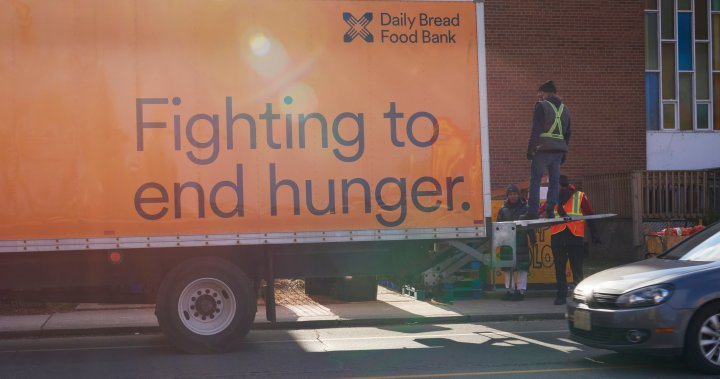The median income of Canadians dropped in 2022 as COVID-related benefits ended and inflation soared, a new Statistics Canada report has found.
Meanwhile, the number of Canadians reporting some form of food insecurity increased to 8.7 million.
The report released Friday found that the median after-tax income of Canadian families and unattached individuals was $70,500 in 2022, a decrease from $73,000 in 2021 ( a drop of 3.4 per cent), adjusted for inflation.
This was despite markets remaining relatively stable, the report said. At the same time, benefits related to the COVID-19 pandemic were discontinued and pandemic-related modifications to the Employment Insurance (EI) program were removed during the year.
It added that approximately 8.7 million people, or 22.9 per cent of the population, lived in households that reported some form of food insecurity. This is an increase of just under 1.8 million from the previous year, when the rate was 18.4 per cent, and marks the second consecutive year of increases since the beginning of the pandemic.
Richard Matern, research director at Food Banks Canada, told Global News that the data was upsetting, but not surprising.
“There’s a big disparity between those who are maybe officially considered in poverty and those who are experiencing food insecurity. And what this is saying is that more people above the official poverty line are experiencing food security,” he said.
Matern added, “Based on what we’re seeing on the ground, things seem to be getting worse and continue to get worse as inflation continues to outpace incomes.”
Breaking news from Canada and around the world
sent to your email, as it happens.
The report said declining government benefits were behind falling incomes, noting “by mid-2022, all benefits related to the pandemic were fully phased out.”
Meanwhile, in fall of 2022 the number of insurable hours required to qualify for EI benefits in many parts of the country increased back to the 2019 requirement, it said. This contributed to the decrease in the number of EI recipients from 4 million in 2021 to 2.9 million in 2022. Similarly, the median EI income for recipients decreased by a little over 40 per cent (from $10,100 in 2021 to $5,900 in 2022).
The report added, “The share of government transfers in total income returned to its pre-pandemic level (13 per cent in 2022), after two consecutive years in which these transfers represented a disproportionately high share of total income (15 per cent in 2021 and 19 per cent in 2020).
Canada’s annual inflation rate of 6.8 per cent in 2022 also contributed to declining incomes.
The official poverty rate was 9.9 per cent in 2022, increasing by 2.5 percentage points from 7.4 per cent in 2021 and approaching the 2019 pre-pandemic rate of 10.3 per cent.
This brought Canada’s poverty rate close to the pre-pandemic level of 10.3 per cent in 2019. Unattached individuals are four times more likely to experience poverty compared to people living in a family, the report said.
In 2022, over one-quarter (26 per cent) of unattached individuals were below the poverty line, a 4.1 percentage point increase from 2021 (21.9 per cent) and nearly four times the 2022 poverty rate for people in families (6.6 per cent).
Matern said while unattached individuals are making up the bulk of food bank users, “We are seeing more families with children and more households with children (at food banks). And one of the shocking statistics is female-led lone-parent households.”
Poverty rates were significantly higher (23.8 per cent) for female-led single-parent households and for single-parent households in general (22.6 per cent).

In 2022, the poverty rate for individuals who are members of racialized groups was 13 per cent, up 3.5 percentage points from 2021 (9.5 per cent). The 2022 poverty rates for the three largest racialized groups in Canada were 11.5 per cent for South Asian Canadians, 15.6 per cent for Chinese Canadians and 13.9 per cent for Black Canadians.
At 17.5 per cent, the share of Indigenous people above 15 years of age living in poverty was nearly double (9.6 per cent) that of non-Indigenous people. People living with a disability (12.3 per cent) were also at higher risk of poverty, particularly those who live unattached (29.4 per cent).
In 2022, 10.7 per cent of immigrants aged 15 years and older lived below the poverty line, a 2.6 percentage point increase from 2021 (8.1 per cent).
Matern said the current situation has meant food banks are being hit on two fronts.
“On one hand there’s the tidal wave of demand, on the other side, people who might have been able to donate before are less able to donate now.”
He said Food Banks Canada is recommending expanding EI and eligibility for EI, along with implementing the Groceries and Essentials benefit.
© 2024 Global News, a division of Corus Entertainment Inc.





